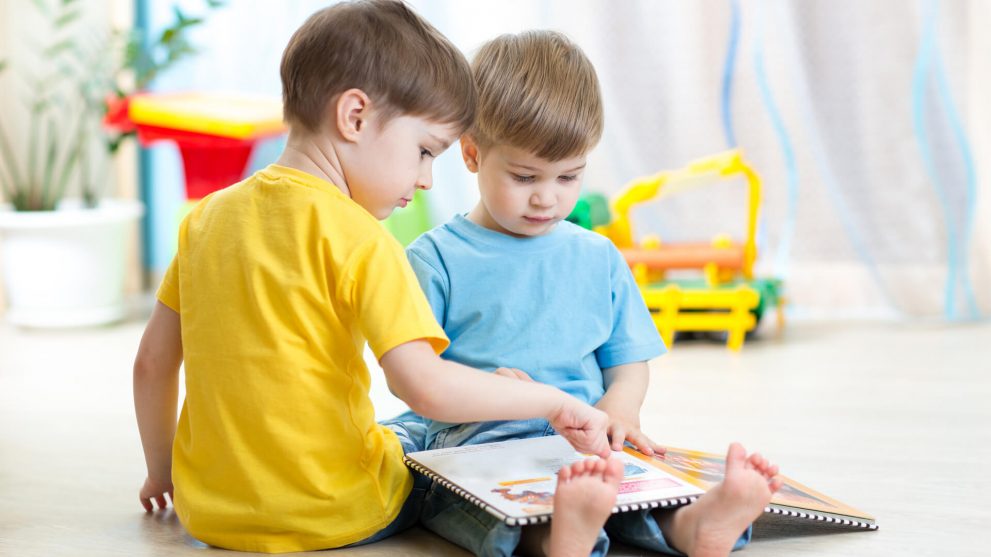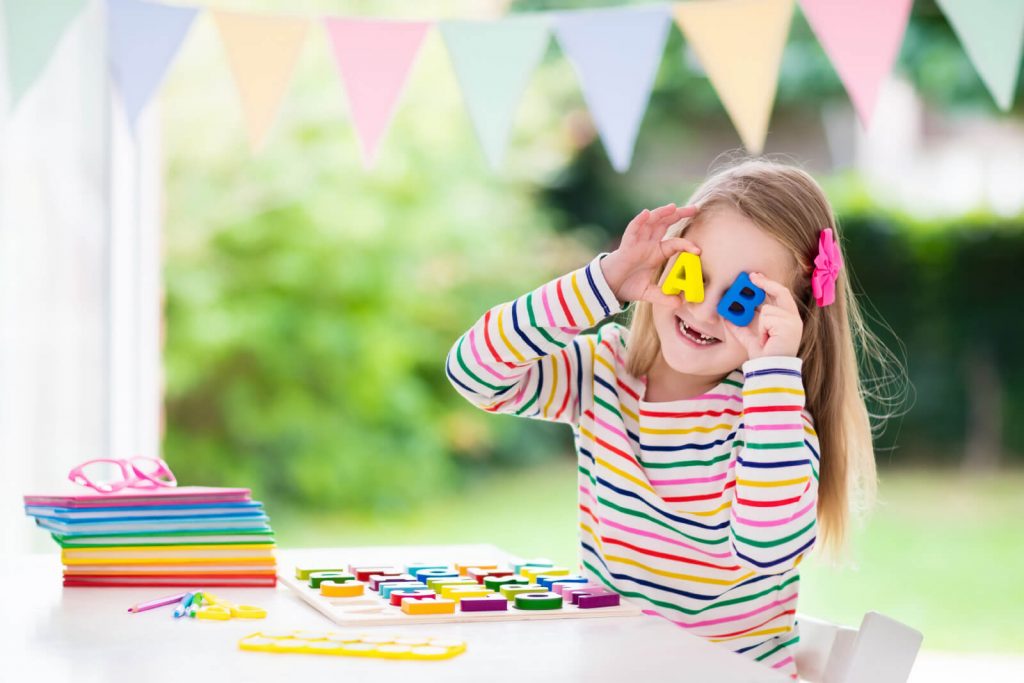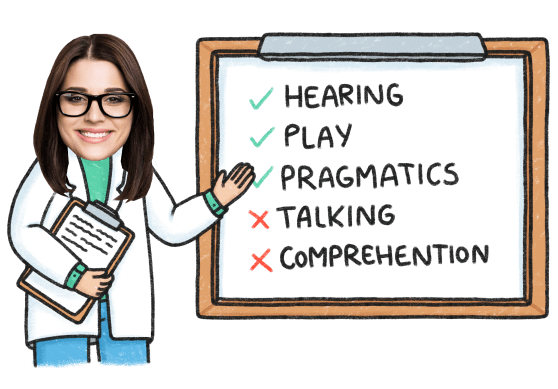Kids and Learning to Read: An All-in-One-Guide
Feb 13, 2022 First of all, learning to read is one of the most important achievements your child can bank. Their ability to develop pre-reading skills, to learn letters and their corresponding sounds, to blend sounds, to memorize sight words, and to make sense out of words based on their context will determine how well they navigate their future school and work lives.
So, this blog attempts to put learning to read into the proper context. For example, it will cover its importance, the history of teaching approaches both past and present, and will give tips and resources to help your child read sooner and more enjoyably. The hope is to help your child become a lifelong reader.
Another All-in-One-Guide
Welcome to our series of “All-in-One” guides connecting blog writers around an important topic that is explored in-depth on our blog page. The subject of this guide explores everything parents need to know about teaching reading from a teacher’s perspective.
In This Article
The Importance of Reading
Reading regularly with young children stimulates optimal patterns of brain development and strengthens parent-child relationships at a critical time in child development, which, in turn, builds language, literacy, and social-emotional skills that last a lifetime.
Pediatrics

Now, why is reading so important?
- Develops Important Language Skills
Reading improves vocabulary in a way that everyday conversation cannot. - A Necessary Part of Today’s Technology
Screens have made reading more important. - Opens Up the World
Reading exposes a child to different cultures, histories, lives, and societies. - Can Improve Social Skills
Reading is usually shared, and so it builds a relationship with language and also others. - It’s Fun!
You can explore new worlds and adventures.
Enough to Make You Pause
A post on the Reading Clinic website reports that “1 in 3 children shows up for their first year of school without the language skills they need to learn to read. Also, reading proficiency by the third grade is the most important predictor of high school graduation and career success.”
Want to know more about developmental milestones? Take our screener to learn more.
The Sad Truth
The same website says that “approximately two-thirds of children each year in the United States and 80% of those living below the poverty threshold fail to develop reading proficiency by the end of the third grade.”
In addition, children from low-income families hear fewer words in early childhood and know fewer words by 3-years-of-age than children from more advantaged families. Also, they have fewer reading materials at home, are less likely to be read to regularly, and are more likely to experience early childhood adversity and toxic stress at an early age. Finally, these all result in a significant learning disadvantage, even before they have access to early preschool interventions.
More stats about American kids and the importance of reading
- Kids who don’t read proficiently by the 3rd grade are 4 times more likely to drop out of school;
- 2/3 of kids who don’t read well by the end of 4th grade will end up in jail or on welfare;
- 25% of American children grow up without learning how to read at all;
- America is the only free-market OECD country where the current generation was less educated than the previous one;
- Over half of 4th graders say they read recreationally “almost every day,” but only 20% of 8th graders do.
The importance of learning to read can’t be understated. What these stats don’t say is that reading, and the connected ability to communicate, seriously influence a child’s confidence and their ability to fit in with their peers. Reading puts kids on a path of having more social and educational choices.
The History of Teaching Reading
The history of how we teach kids to read has evolved hand in hand with our understanding of child development theory. More specifically, discussions about what’s better: constructivism, learner-centered, or holistic learning methods is comparable to arguments about phonics and the whole language approach.

Phonemes
In A Brief History of Reading Instruction, teacher Stephen Parker states that a Synthetic Phonics program . . . starts, not with whole words, but with the most basic sounds in English, called phonemes. These phonemes are connected to the letters (graphemes) that symbolize them in our alphabetic system. Whole words are then built (bottom-up) by blending these individual sounds.
Proponent Ted Geisel (Dr. Seuss) said, “I think killing phonics was one of the greatest causes of illiteracy in the country.”
The Whole Language Approach
In contrast, where the phonics approach is a constructivist “bottom-up” approach, whole language is a more behaviorist “top-down” approach “where the reader constructs a personal meaning for a text based on using their prior knowledge to interpret the meaning of what they are reading,” says Jon Reyhner, Northern Arizona University.
The truth of the matter is that rarely is any teacher’s approach based solely on one or the other. That is to say, budding readers need both decoding and comprehension skills for proficiency. Teachers usually use a guided reading approach to break up into skill- or level-centric groups that use a combination of both methods to improve reading levels. One universally agreed-upon opinion is that daily reading is crucial.
But, how long should kids read every day?
Some experts say 15 and some say 30 minutes will do the trick. I like this explanation from Heidi Songs’s article:
“Why can’t I skip my 30 minutes of reading tonight?”
Let’s figure it out — MATHEMATICALLY!
- Student A reads 30 minutes a night;
- Student B reads only 5 minutes a night
Step 1: Multiply minutes a night x 7 times each week.
- Student A reads 210 minutes a week.
- Student B reads 35 minutes a week.
Step 2: Multiply minutes a week x 4 weeks each month.
- Student A reads 840 minutes a month.
- Student B reads 140 minutes a month.
Step 3: Multiply minutes a month x 12 months a year.
- Student A reads 10,080 minutes a year.
- And Student B reads 1,680 minutes a year.
- Student A practices reading the equivalent of 28 whole school days a year.
- Student B gets the equivalent of only 5 school days of reading practice.
Step 4: By the end of 6th grade if Student A and Student B maintain these same reading habits:
- Student A will have read the equivalent of 60 whole school days
- Student B will have read the equivalent of only 12 school days.
The gap of information retained will have widened considerably, and so no doubt will school performance. Will Student B feel the same about his/her knowledge as Student A?

Tips for New Teachers
An article by educational consultant Elaine K. McEwen organizes the teaching of reading into “Seven Strategies of Highly Effective Readers.” Her approach provides usable aids and lesson templates that will help every new teacher get a head start in helping kids improve their reading.
How to Help Your Child Develop a Solid Relationship with Reading
Here are some surefire ways to build a close daily relationship with reading:
- Set Aside a Reading Area and Time – Carve out a little nook somewhere that communicates that reading is special and that offers a bit of privacy. Also, a good light, some books, and comfortable cushions will help them get lost in their book.
- Let Them Choose the Reading Material – Like anything, your child will be more interested if they choose the stories they’ll read.
- Set a Good Example – Read daily and let your kids see you reading (more than just emails or work papers) books.
- Have Different Reading Materials in Your Home – Books, magazines, newspapers, mail from family members, recipes, etc.
- Talk about Their Reading/Ask Questions – Ask questions about the text and pictures, and don’t be afraid to act like you don’t know the answers. Kids love to help and correct their parents.
- Read Daily to Them – See the calculation above, and remember that if it becomes a daily routine, they’ll want it more.
- Make Trips Together to Your Local Library – Family trips to the local library are crucial! There’s a lot of free literacy-related activity going on there!
WAIT! Here are even more . . .
- Bring the “Goofy” – Act out characters, voices, and emotions. Bring stories alive with your enthusiasm.
- Cook Out Loud – Anytime you cook or bake with a recipe, have your child read the instructions with you, even if they can’t decode the words.
- Karaoke/Subtitles – read the lyrics – Some kids are obsessed with songs and music. Karaoke makes it easy to sing along with their favorite songs and to read lyrics at the same time!
- Let Them Read on Devices – Let them read on a tablet for just 15-20 minutes/day to become familiar with positive active screen time.
Reading Resources
Now, our website’s blog section has some posts that deal with learning to read issues. The first is: “Reading to Kids: The Million-word Gap,” where SLP Stacie Bennett discusses the impact of reading daily to kids for different lengths of time. She also talks about the differences between reading words and speaking them. The result can be a devastating “million-word gap.”
Don’t Miss These
Our next blog by Stacie is a wonderful set of recommendations for great books to foster children’s reading. There are some real classics in there!
Then, How Bedtime Stories can Reinforce Literacy Skills by blogging mother Lisa Van Groningen, who discusses the educational and familial value of setting aside time for an organized bedtime routine that includes stories.
And Even More
Another example is SLP blogger, El Robertson, who wrote a practical blog on how to utilize books to develop literacy in children. Her blog, “10 Tips for Improving Reading and Language Learning” looks at the personal intimate moment of reading to your child and offers strategies for helping them ask questions, encourage playfulness, and to foster daily amazement.
Here is a list of more reading-centric blogs that you’ll find enlightening!
Start with the comparison of reading vs. adult communication to understand more about why reading is important:
Recommended article
Read more about comprehension, fluency and speech production:
Recommended article
How to Improve Reading Comprehension, Fluency, and Speech Production
Start early with tips on how to foster early love of reading:
Recommended article
How to Foster an Early Love of Reading
If you want to tell your child more about storytelling, here is a good place to start:
Recommended article
How to Teach Story Elements to Kids
Above all, teaching reading has so many different ways to help kids make connections with the written word, from focusing on words they see in their everyday lives, to recipes, TV guides, online newspapers, and much, much more.
The important thing is to start, to practice daily, to let children tell you the topics and materials they are interested in, to have as much fun as possible, and to use their imaginations to make the words they see come to life. In so doing, our world becomes more interesting and understandable.
The Best Worldwide Literacy Organizations
A great blog called “Playing by the Book” provides a fairly comprehensive list of charities and organizations focused on literacy. Definitely check it out, donate, and contribute ideas to these worthwhile organizations.
Reading Blubs is Here!
Our new learn-to-read app, Reading Blubs, is the natural next step from our big sister app, Speech Blubs. So, besides helping kids speak confidently and effectively, it was a natural progression to also help them to read books. Once you have a Speech Blubs subscription, you can start learning with Reading Blubs for free!
Boost Your Child’s Speech Development!
Improve language & communication skills with fun learning!

Building Words can be Fun!
Our new app uses a fun mixture of teaching methods chosen by literacy experts who teach reading in a fun and engaging way. Kids first do pre-reading exercises, everything from building letters, to reading their first stories.
All of the stories are original, and our library is growing every day. The best part is that subscribers get both apps for the same low price. Our mission is to help kids first, and parents as well.
Helping kids develop into proficient readers is more than just learning letter sounds. Clarifying the reading process and encouraging kids to play games is going to result in language arts being more fun! The future is looking clearer, indeed!

